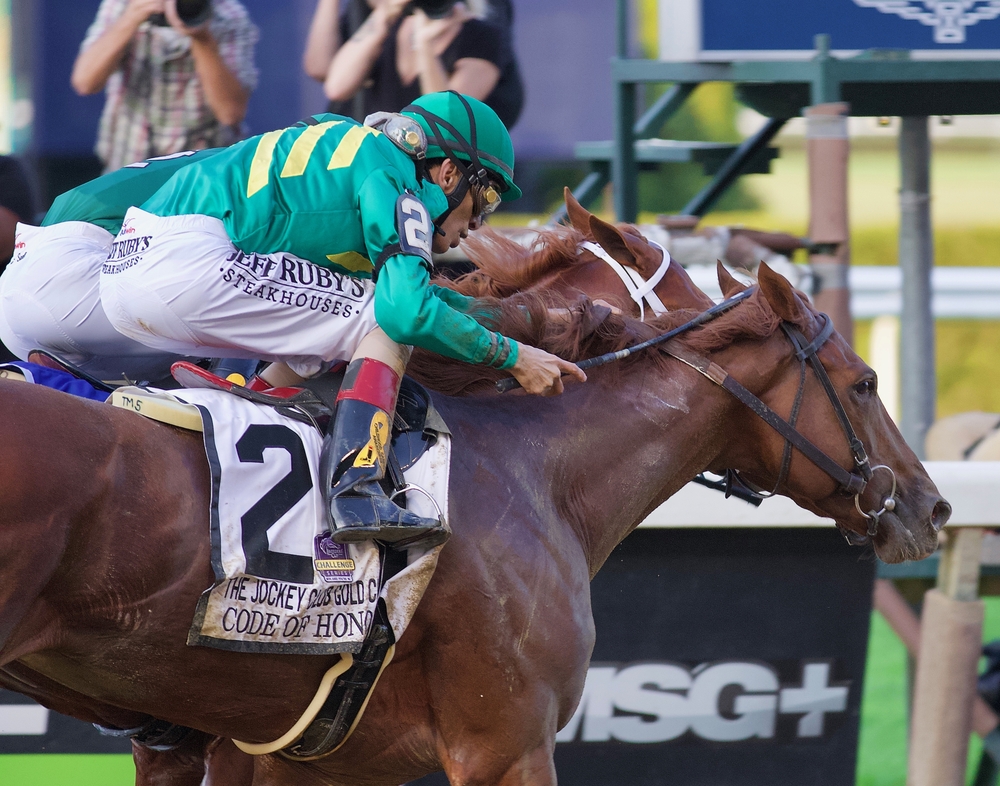The Romanosky Roulette Strategy is a method employed by players seeking to maximise coverage on the roulette table. Unlike other betting systems that often focus on higher risk, high reward tactics, the Romanosky method hones in on a more conservative approach. It utilises a combination of bets that cover a substantial portion of the table, specifically targeting 32 of the 37 numbers available in European roulette. The strategy entails placing bets on two dozen sections and two corner sections, which leaves only five numbers uncovered, presenting a high probability of hitting a winning number with each spin.
Incorporating the Romanosky Roulette Strategy requires a clear understanding of the game’s mechanics and the distribution of bets across the table. Players utilise eight units of chips in each round, balancing the risk and reward by aiming for consistent, smaller gains over time. This aligns with fundamental principles of bankroll management, which emphasises protection of funds and prolonging play, over chasing large, quick wins. The strategic layout of bets is designed to withstand the natural ebbs and flows of the game, offering a safety net through extensive table coverage, thus making it an intriguing option for those interested in advanced betting strategies in roulette.
Key Takeaways
- The Romanosky Roulette Strategy covers 32 numbers, offering high table coverage.
- A balanced approach blends risk management with opportunities for consistent gains.
- Understanding roulette mechanics is essential for effective application of the strategy.
Need Help Beating the Bookies?
Our expert betting tipsters have been taking cash off the bookies since 2014! If you need a helping hand with winning then why not check them out?
Browse Our Tipsters
Euro Football Punter
Simple Yet Highly Profitable Football Tipster Focussing on the Major Leagues
Visit PROFILEUnderstanding Roulette
This section offers insights into the mechanics of the roulette table, diverse betting options, and the mathematical probabilities that govern the game.
Basics of the Roulette Table
A roulette table features a wheel with numbered pockets and a corresponding layout where players place their bets. There are two main variants: American roulette, with pockets numbered 0 to 36 and an additional 00 pocket, resulting in 38 possible outcomes, and European roulette, which has pockets numbered from 0 to 36 for a total of 37 outcomes. French roulette is very similar to the European version, often featuring additional rules that slightly lower the house edge.
Betting Options and Rules
The roulette table offers two primary categories of bets: inside and outside bets. Inside bets are wagers on specific numbers or small groups of adjacent numbers. These include straight-up bets, split bets, street bets, and corner bets. Outside bets cover larger groups of numbers such as dozens (dozen bets), even or odd, red or black, and high (19-36) or low (1-18) numbers. The rules of betting are straightforward: players place their chips on the desired section of the roulette layout before the dealer closes betting.
Roulette Odds and Probabilities
The odds and probabilities in roulette are tightly connected to the type of bet and the variant of the game. European roulette offers a higher probability of winning on single number bets due to having one less zero than American roulette. The house edge, which is the casino’s advantage, is approximately 2.70% for European and 5.26% for American roulette. Betting strategies often aim to manage risk, with bets like the Romanosky focusing on covering a large portion of the table to increase winning chances while acknowledging that no strategy can overcome the house edge in the long term.
The Romanosky Bet
The Romanosky bet is a low-risk betting method in roulette that covers 32 numbers on the betting table, offering players a high probability of winning with carefully placed wagers.
Strategy Overview
The Romanosky roulette system utilises a combination of bets to cover a significant portion of the roulette wheel. This strategy specifically involves placing bets on 32 numbers out of 37 (or 38 in American roulette), effectively providing a coverage of approximately 86.5% on a European roulette table.
Placing the Romanosky Bet
To place a Romanosky bet, a player makes two corner bets (also referred to as a “square” or “quarter” bet) and two dozen bets. This configuration ensures that each bet consists of eight units, thus covering 32 numbers on the table. For example:
- Bet 1: Corner bet on numbers 1-2-4-5
- Bet 2: Corner bet on numbers 32-33-35-36
- Bet 3: Dozen bet covering 13-24
- Bet 4: Dozen bet covering 25-36
This setup leaves only five numbers on a European wheel uncovered, representing the potential losing numbers for this strategy.
Advantages of the Romanosky Bet
The primary advantage of the Romanosky strategy is its high probability of winning due to the extensive coverage of the table. This broad coverage makes it a low-risk choice, often yielding consistent but smaller returns on bets over time, making it appealing for those looking for more secure betting options.
Limitations of the Romanosky Bet
Despite its high win probability and low risk, the Romanosky bet comes with its own set of limitations. The strategy offers limited earnings, dependent on the payout structure of the corner and dozen bets. Additionally, the five uncovered numbers represent an inherent risk of losing. The necessary larger bets also require a higher initial bankroll to sustain play and make use of the strategy effectively.
Advanced Betting Strategies
In the realm of roulette, advanced strategies provide frameworks that can enhance a player’s approach to betting. Among these, the Romanosky betting system has gained popularity due to its promise of covering a significant portion of the board, thereby striking a pragmatic balance between risk and potential return.
Comparing Romanosky with Other Strategies
The Romanosky method stands in contrast to negative progression systems such as the Martingale and Labouchere systems. Where Martingale calls for doubling bets after a loss—a tactic that can quickly escalate risk—the Romanosky strategy aims for sustained play with less volatility. It covers 32 numbers and leaves only five at risk, different from the aggressive coverage changes seen in Martingale. Meanwhile, the Labouchere requires a more complex betting sequence and does not provide the extensive coverage of Romanosky.
Understanding Variations and Adaptations
Variations of the Romanosky strategy allow for incremental changes based on player preference and bankroll. While the core concept of betting on two dozens and one corner to cover 32 numbers remains, adaptations may involve incorporating elements of slightly negative progression to manage losses. These variations maintain the fundamental principle of extensive coverage but with an added layer of control over wager adjustments.
Calculating Expected Value
The expected value (EV) is a formula that players use to gauge the anticipated return of a strategy over time. For the Romanosky, with a European wheel, the calculation would take into account the profit margin set against the coverage of 32 numbers.
Since the Romanosky bets typically cover over 80% of the wheel, they yield a narrower profit margin but provide a conservative strategy compared to high-risk negative progression systems.
Bankroll Management
Effective bankroll management in the Romanosky roulette strategy is crucial as players deal with stakes of eight units per round. Ensuring a sufficient bankroll to withstand the variance of the game is essential to maintain a consistent presence at the table.
Setting a Betting Budget
One’s betting budget must be well-defined before engaging in the Romanosky strategy, taking into account that the approach requires a large bankroll. Players should determine the minimum stake they can afford and assess how many units they can allocate without compromising their financial stability. A budget acts as a safeguard against the volatility inherent in roulette, allowing for an allowance of eight units per bet. This ensures that ample funds are available to absorb potential losses, while also striving for a steady accumulation of profit.
The Role of Discipline in Successful Wagering
Discipline plays a pivotal role in successful wagering with the Romanosky roulette strategy. It helps in two key areas:
-
Risk Management: Maintaining strict adherence to a predefined stop-loss limit can protect a player’s bankroll. Knowing when to step away, regardless of whether they are ahead or behind, minimises risk and preserves capital for future sessions.
-
Consistency: Betting consistently in accordance with the strategy, and resisting the temptation to deviate based on luck or intuition, bolsters the player’s chances of realising long-term profits. The Romanosky strategy relies on small, incremental gains, so consistency in wagering is vital for success.
Overall, players need to be aware that while they can cover over 80% of possible outcomes, their profit margins are relatively modest. Therefore, employing strict bankroll management is key to the Romanosky strategy’s effectiveness.
Practical Application of the Romanosky Strategy

Applying the Romanosky Roulette Strategy involves a calculated approach with precise wagers, aiming for a high probability of winning. This section will dissect practical tips and advice to maximise your potential outcome whether you’re a beginner or an advanced player, and across different casino settings.
Tips for Beginners
For those new to the Romanosky strategy, the simplicity of its application makes it accessible. Beginners should start by placing wagers on two dozens and two corners, which covers 32 out of 37 numbers on the roulette table. To clarify, this means placing bets in the following manner:
- 2 units on the first dozen (1-12)
- 2 units on the second dozen (13-24)
- 1 unit on the corner covering 25-26-28-29
- 1 unit on the corner covering 32-33-35-36
This division of chips increases the beginner’s chances of winning a spin, though it’s important to remember that no strategy can guarantee an outcome.
Advice for the Experienced Player
Advanced players should consider the nuances of the Romanosky strategy. This includes attentiveness to patterns such as ‘hot’ and ‘cold’ numbers, and adjusting bets accordingly. Expert players may also opt to vary their bets based on these patterns, exercising a dynamic approach to each spin. However, the strategy guide remains the same; balance risk by covering a majority of the table and manage the bankroll carefully.
Online vs Physical Casinos
When applying the Romanosky strategy in online casinos, players can benefit from the convenience and speed of digital play. The top online casinos provide interfaces that track results and statistics, aiding in spotting patterns. In physical casinos, players must manually track this information. Regardless of the setting, the Romanosky strategy can be applied effectively with attention to the casino’s wagering limits.
Tracking Results and Patterns
Players should record outcomes of each spin to identify any discernible patterns. A straightforward table can be used for tracking results:
| Spin Number | Winning Number | Outcome | Notes |
|---|---|---|---|
| 1 | 20 | Win | |
| 2 | 5 | Lose | |
| 3 | 31 | Win | Hot number |
Disciplined record-keeping will inform the player’s understanding of the game’s flow and may suggest adjustments to wagers or strategy.
Conclusion
The Romanosky betting system offers an intriguing option for roulette enthusiasts. This strategy is defined by its high probability of winning due to coverage of a large number of numbers on the roulette table. Players cover 32 numbers and leave five unaccounted for, which technically presents an over 80% chance to win each spin on a European roulette wheel.
Pros:
- High win probability: Players enjoy a significantly increased chance of winning on each spin compared to many other strategies.
- Simple to execute: The system is easy to apply without complex calculations.
- Risk management: With more numbers covered, risks are more spread out.
Cons:
- Low-gain: When a bet is successful, the winnings are relatively small due to the spread-out bets.
- Not immune to the house edge: Like all betting systems, it does not overcome the casino’s inherent advantage.
- Potential for quick losses: Despite the high chance of winning, a run of the five uncovered numbers can deplete a bankroll quickly.
Players considering the Romanosky strategy should be aware that winning is more frequent but involves lesser payouts per win. Hence, those seeking substantial single-spin wins might find this system disappointing. However, for those who prefer consistency over high risk and reward, the Romanosky offers a structured approach to betting. It is crucial to remember that no betting system can guarantee profits, and responsible gambling guidelines should always be adhered to.
Frequently Asked Questions
In this section, readers will find common inquiries regarding roulette strategies, with a focus on the intricacies of the Romanosky method as well as other popular systems.
What constitutes a successful strategy in roulette?
A successful strategy in roulette should minimise the house edge, manage the player’s bankroll effectively, and provide clear guidelines on how to bet in each round. Strategies like the Romanosky align with these principles by covering a large number of pockets on the wheel.
How do beginners effectively approach roulette strategies?
Beginners should start with strategies that are simple to understand and implement, such as the Romanosky or the 3-2 system. One should familiarise themselves with the rules of roulette and practise with smaller stakes or on free online platforms before playing with significant amounts.
What are the basics of the 3-2 roulette strategy?
The 3-2 roulette strategy involves placing a combination of bets that cover a large section of the wheel. A player bets 3 units on a colour and 2 units on a column, or vice versa. This approach allows them to cover most of the numbers while maintaining a balanced risk-reward ratio.
In what way does the Kavouras Bet differ from other roulette systems?
The Kavouras Bet is a scattered betting pattern which covers a significant portion of the wheel with differing amounts wagered on each bet. This chaotic betting strategy is noted for its unpredictability and differs from more structured systems such as the Romanosky or Martingale.
Can the Martingale strategy consistently yield wins in roulette?
The Martingale strategy, where a player doubles their bet after a loss, can yield short-term wins. However, it may not be sustainable in the long term due to table limits and the potential for large losses from consecutive losing spins. Thus, consistent wins cannot be guaranteed.
How does one apply a theory-based strategy to roulette?
One applies a theory-based strategy to roulette by following a predetermined set of rules based on mathematical principles or past outcomes. The Romanosky for instance, relies on the theory of covering a large number of outcomes to increase chances of winning. Players use their understanding of odds and table limits to inform strategic decisions.





